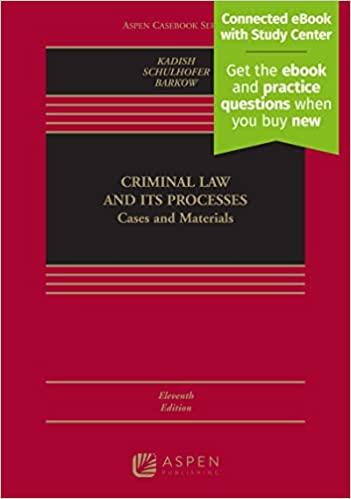Question
1. In a civil action in a common law jurisdiction, the court applied the theory of tortious conduct known as strict liability . This information
1. In a civil action in a common law jurisdiction, the court applied the theory of tortious conduct known asstrict liability. This information indicates that the defendant.
will be liable for losses caused by an activity in which he engaged even if he was not
negligent or otherwise at fault for the losses.
completely barred the plaintiff's claim of liability by employing an affirmative defence
known as assumption of the risk.
was found to be 50 percent or more at fault for causing the losses.
was held to a higher standard of care because of his profession.
2 Mr. Reasoner was looking out his livingroom window and saw his next-door neighbour, Jon Bon, trying to burn leaves. Bon threw gasoline on the damp leaves, and when he lit a match, there was an explosion that sent flames in every direction. Luckily, no one was around, and the flame that shot onto Reasoner's property caused no harm whatsoever. Reasoner was upset by this carelessness and sued Bon for negligence. Which of the following is the best argument for the defendant Bon?
There were no damages suffered.
He didn't owe the plaintiff a duty of care.
Reasoner had voluntarily assumed the risk.
He was not below the standard of care.
Step by Step Solution
There are 3 Steps involved in it
Step: 1

Get Instant Access to Expert-Tailored Solutions
See step-by-step solutions with expert insights and AI powered tools for academic success
Step: 2

Step: 3

Ace Your Homework with AI
Get the answers you need in no time with our AI-driven, step-by-step assistance
Get Started


